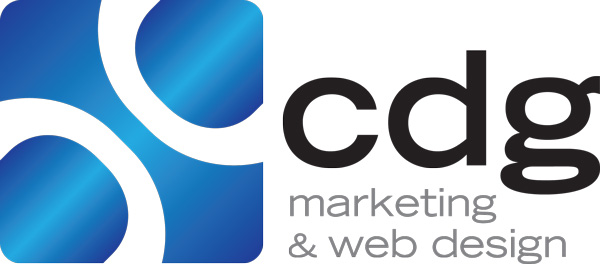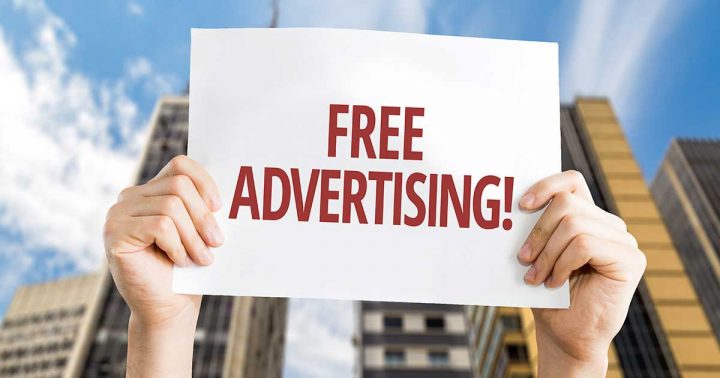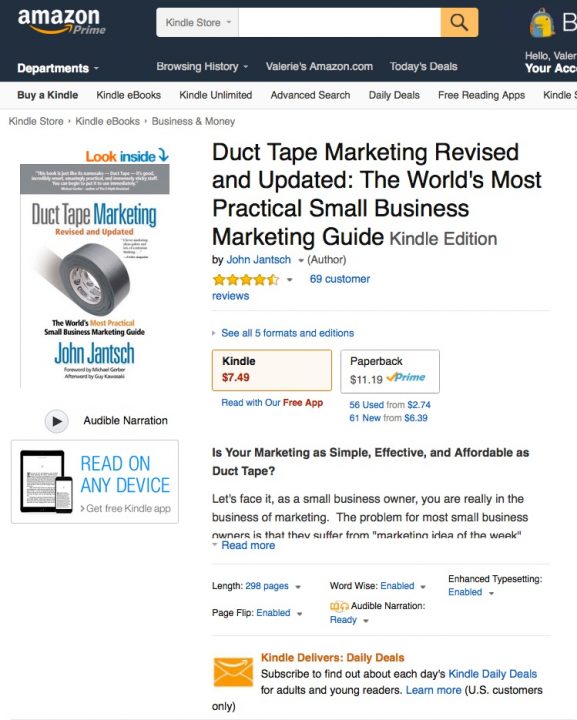Posts
Printing Jargon You Should Know
Whether you have a designer that handles your art or you work directly with printers yourself, there are some common printing terms you should be familiar with. This article covers the basics.
Distributing your Blog Content
No matter which blogging platform you are using, experts agree that it’s a valuable way to connect with both your existing and future customers. So you might be asking yourself: “What’s the best way to get readers to follow my blog?” You need to make it as easy as possible for your readers to follow your blog; fortunately most blogging platforms come with built in tools and plugins to do so. The two most common ways to stay connected to your readers are: RSS feeds Email RSS Feeds RSS feeds are simple to use (both as a blogger and as…
Free Secret Way to Promote Your Business
Got your attention, didn’t it? It’s not really a secret, it’s just that so many people simply skip it, or don’t use it well, that you’d think it was a secret. Free and Easy Marketing that Everyone Can Use Are you looking for a set-it-and-forget-it way to keep your company information in front of your contacts? One that’s FREE? Piece of cake! Your email signature is the perfect opportunity to not only make sure your contacts have information about how to contact you, but it’s a quick way to share links to your web site, your social networking pages, and…
Top 5 Tips from “Duct Tape Marketing” by John Jantsch
The book “Duct Tape Marketing” by John Jantsch is easily one of my favorite business marketing books. Jantsch takes tried-and-true marketing concepts and breaks them down into understandable, usable, basic methods – suitable for the average business person. In no particular order, here are my favorite strategies: Identify your ideal client (page 2). This is actually chapter 1 in the book, and for good reason, if you don’t know who you are marketing to, you will have no focus in your message. If your business is handyman services, your ideal client is probably a 40-ish woman who either doesn’t have…
FREE Bing Local listings = FREE Advertising
Here is an internet marketing secret most people ignore: get your business in Bing Places (Bing Local). While you might think nobody actually uses Bing, you would be wrong! Bing is the default search on every iOS device sold in America. If you talk to Siri, or use spotlight to search, you are using Bing, and that’s a significant amount of traffic. It would be foolish not to add your business to their local listings. It’s free. Free advertising is ALWAYS good. Bing Places for Business You have to have a Windows Live ID to create the listing, but that…
A marketing strategy for the average Joe
Part of blogging is selling. Part of selling is knowing not only what your customers buy, but why they buy it. Not only do you need to know what and why they buy, but you also need to know how to communicate to potential clients so that they know that your company can provide what they need. WOW! That’s a tall order! Volumes have been written on sales and marketing strategies. Entire degree programs are dedicated to it. So, how’s the average Joe Business Owner supposed to get a handle on the essential knowledge? Here’s my personal recommendation, a book,…
Linkshare
I’ve been a Linkshare affiliate for a few years. I’ve been very pleased with the choices of merchants and offers. They have some great tools, making it easy to develop links and feeds to automate your advertising program. I’m by no means an expert at it, but I’m happy to report that Linkshare lives up to their end of the deal, and consistently sends payment in a timely manner. My blogs aren’t at a pro level, so I haven’t been accepted by a few of the larger merchants; there are so many to choose from that is just a blip…
Search Engine Optimization (SEO) Basics
Whether you are blogging or developing another type of website, the basics to SEO remain the same: On-page SEO includes: Good, fresh content Optimized content Meta <Title> Tag containing keyword Meta <Description> Tag containing keyword A reasonable density of the keyword you are targeting in your content Proximity of keyword to beginning of content Keyword appearing in H tags and alt tags (there is dispute over this in the SEO world) Schema markup Off-page SEO includes: Quality links back to your site: Organic links Directory links Authority site links Social Signals Integration of products offered by the search engines (Google,…
10 Blog Traffic Tips
In every blogger’s life comes a special day – the day they first launch a new blog. Now unless you went out and purchased someone else’s blog, chances are your blog launched with only one very loyal reader – you. Maybe a few days later you received a few hits when you told your sister, father, girlfriend and best friend about your new blog, but that’s about as far you went when it comes to finding readers. Here are the top 10 techniques new bloggers can use to find readers. These are tips specifically for new bloggers, those people who…
Promoting Your Business Using Press Releases
Press releases are a great way to get media coverage of your business as well as links to your website. The trick is getting the press releases to the right people. There are several ways to go about this, some are free and some cost money. For now, let’s consider the free options. There are many, many sources out there that will distribute your press release for free. I found a fairly comprehensive list of free press release sources in an article on Mashable. Another source of contact information is to pay for access to a site such as Mondo…
- « Previous
- 1
- 2
- 3
- Next »





